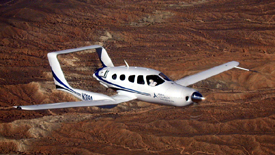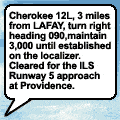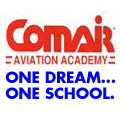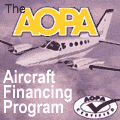Departments

Inside AOPA 
On Capitol Hill 
Airport Support Network 
Quiz Me! 
Rod Machado's Tips

Picture of the day

Coming Up
AOPA Pilot

ePilot Calendar 
Weekend Weather
| GA News
| MEGGITT AVIONICS PURCHASES S-TEC
S-Tec Corporation, located in Mineral Wells, Texas, will announce Sunday that it has been bought by United Kingdom-based Meggitt Avionics. S-Tec is an autopilot manufacturer, while Meggitt makes a variety of products, including multifunction displays and sensors. With the acquisition, Meggitt intends to become the manufacturer of a complete line of avionics products, including high-quality displays and flight-control systems. One of the factors leading to its purchase of S-Tec is the success that S-Tec has had in the aftermarket. Meggitt has experience with the original equipment manufacturers--for example, there are two Meggitt engine displays standard in The New Piper Meridian. Meggitt sensors are also used on Cessna Citations, Gulfstreams, Beech 1900 airliners, and Boeing aircraft. The British firm now appears to be making a major run at the general aviation market. Meggitt Avionics recently announced that it would sell a version of its MAGIC panel--Meggitt Avionics new-generation integrated cockpit--for $39,900. The system includes a primary flight display and a navigation display, along with an air data attitude heading reference system.
COMMANDER UNVEILS 115 SERIES
Commander Aircraft, located in Bethany, Oklahoma, has introduced the 115 series featuring a long list of improvements to the airframe, engine, avionics, and range capability. Improvements include a composite engine cowling, an electrically operated cowl flap, and dual Garmin GNS 430 GPS/nav/coms with moving maps. The 160-knot normally aspirated aircraft’s range was increased by using the wing from the turbocharged model, which carries 20 gallons more fuel, boosting the range to 854 nm (including IFR reserves) at 75 percent power. The Commander 115 replaces the 114 series, and has a base price of $425,500 for the normally aspirated model, and $472,500 for the turbocharged model. Commander Aircraft officials said that they delivered 13 aircraft last year and expect to build 24 in 2000. For information visit the Web site or telephone 405/495-8080.
PRESSURIZED SIX-PASSENGER TWIN ROLLS OUT
 The official rollout of the six-place pressurized Adam M-309 twin-engine aircraft took place Wednesday at the Scaled Composites factory in Mojave, California. Developed by Adam Aircraft Industries, the composite tractor/pusher twin prototype first flew in March. It promises a 230-kt cruise speed at 75-percent power. The aircraft is to be built at a new factory at Centennial Airport near Denver and will be certified under FAR Part 23. First deliveries are expected in 2003. For more information, contact Adam Aircraft Industries at 303/779-5140. . The official rollout of the six-place pressurized Adam M-309 twin-engine aircraft took place Wednesday at the Scaled Composites factory in Mojave, California. Developed by Adam Aircraft Industries, the composite tractor/pusher twin prototype first flew in March. It promises a 230-kt cruise speed at 75-percent power. The aircraft is to be built at a new factory at Centennial Airport near Denver and will be certified under FAR Part 23. First deliveries are expected in 2003. For more information, contact Adam Aircraft Industries at 303/779-5140. .
For daily news updates, see AOPA Online.
|
Inside AOPA
| FCC ASKED TO PROTECT GPS FREQUENCIES
AOPA President Phil Boyer, joining with nine other aviation associations, has called upon the Federal Communications Commission to protect the Global Positioning System (GPS) radio frequency spectrum from potentially hazardous interference caused by ultra-wideband (UWB) communication and radar systems. In a letter to FCC Chairman William Kennard, Boyer and the other aviation co-signers noted that, "Unlike traditional two-way communications services, broadcast GPS is vulnerable to interference from background noise." It is thought that without proper analysis and protection, the presence of UWB emissions could raise the noise floor in the band used by GPS above receiver sensitivity at critical phases of flight, thus posing a flight safety risk. Noting its support for new technological advances, the group urged the FCC not to take any final action on approving UWB systems until operational demonstrations have been completed which will ensure that unwanted emissions do not encroach into the safety-of-flight GPS bands.
AOPA ASKS FAA TO INVESTIGATE NIGHT FEES
AOPA has asked the FAA to investigate Massport's nighttime surcharge at Laurence G. Hanscom Field in Bedford, Massachusetts. AOPA has for years asked Massport to stop the nighttime surcharge because AOPA believes that it is unjustly discriminatory. AOPA argues that the surcharge, which is a measure to reduce noise, is not related to actual aircraft noise, but to aircraft weight. In other words, a quieter but heavier aircraft may have to pay a higher fee than a smaller but louder aircraft. AOPA believes that Massport has to eliminate the nighttime surcharge and proceed with an FAR Part 150 noise study in order to evaluate and legitimize noise problems and mitigation measures.
AOPA VISITS ALASKA SAFE FLIGHT PROGRAM
AOPA recently toured several Alaskan facilities related to the FAA's Safe Flight 21 program. The experimental Safe Flight 21 program will allow specially equipped aircraft in Alaska to fly using datalinked traffic and weather advisories during a test series scheduled to begin this summer. Later tests are to include datalinked air traffic control services. Safe Flight 21 marries the desires of air carriers to increase airspace and airport capacity with the FAA's desire to adopt less expensive technologies and general aviation's desire to gain meaningful operational benefits from systems it is ultimately forced to adopt. In a nutshell, the FAA Alaska Region has been doing a good job moving things forward in terms of installations, certification, ATC automation, and ATC procedures. Challenges remain in the collection and measurement of safety and operational benefits, securing Department of Defense support for spectrum in the DME band, and resolving conflicts between Safe Flight 21 and the FAA's government/Industry partnership program (with Honeywell and Arnav) on uplinking graphical weather information to cockpits.
GAO SAYS WAAS IS THE ONLY ALTERNATIVE
A recent article in a popular aviation periodical inaccurately characterizes a preliminary General Accounting Office report on the FAA's Wide Area Augmentation System (WAAS) cost/benefit and alternatives study recently leaked to the press. AOPA is participating in GAO's formal comment process for this study. The key points are that GAO found that the FAA's study adequately considered the alternatives and concluded that WAAS and the Local Area Augmentation System are the only alternatives that meet aviation's requirements. With regard to recent setbacks in the program, GAO points to internal FAA management problems and insufficient contractor oversight as primary causal factors that should have been addressed as early as 1997. It points out that costs will likely grow somewhat because of these delays, but that non-quantifiable benefits must be taken into account. Industry experts believe the benefits are considerable. Other conclusions leaked to the press are likely to change. At AOPA's urging, the FAA has organized an expert panel from the GPS industry to address WAAS design and certification problems. This team will define the steps that must be taken to deploy an operational WAAS system and the specifics for achieving Category I precision approaches.
| On Capitol Hill
| SUPPLEMENTAL FUNDING BILL DIES IN SENATE
The $12.7-billion supplemental spending request that passed the House of Representatives last week was declared dead on arrival in the Senate on Monday by Majority Leader Trent Lott. It had been widely believed that the Senate would at least consider an FAA-proposed $77 million supplemental funding request to prevent possible lags in FAA operations. Lott said that any supplemental spending will now be incorporated into the regular FY2001 spending bills and placed on a fast track to President Bill Clinton. The supplemental spending bill passed by the House contained no additional FAA funding, but doubled the Clinton administration’s initial $5.1 billion request. Clinton has indicated to Lott that he is not opposed to such an approach.
| Airport Support Network
| VOLUNTEER OF THE WEEK -– CHRIS ANDREWS
The Des Moines International Airport master plan has been quietly amended in recent years to accommodate the growth of large cargo operations. These amendments include the permanent closure and removal of Runway 13R/31L (a 3,200-foot runway), which handles 44,000 mostly general-aviation operations each year. Chris Andrews--aware of the plan--decided to become an AOPA Airport Support Network volunteer. Andrews reported the issue to AOPA and provided local research. AOPA evaluated the effect that closure of the runway would have on all airport users, and wrote to the airport director urging that appropriate steps be taken to protect general aviation interests. Andrews is continuing the battle by informing pilots of the situation and plans to organize a pilot association to help protect GA interests.
Click here to learn more about the Airport Support Network.
| Quiz me!
| Here’s a question asked by an AOPA member last week of our AOPA technical specialists. Test your knowledge.
Question: I went to a ground school program and received training to take the written exam. A week later I took the exam and passed. The problem is that I have lost the certificate saying that I passed. I want to start flight training, but am not sure what I can do without that certificate.
Answer: You may write to the FAA and request a copy of your written test results. For a copy of the form you will need to submit, see AOPA Online. Don't forget to include a check or money order for the replacement. By the way, this same form may also be used to replace a lost or destroyed airman’s certificate.
Got a technical question? Call our technical specialists at 800/872-2672 or e-mail to [email protected]. Send comments on our Quiz Me! questions to [email protected].
| Rod Machado's Tips
| Aviation humorist Rod Machado explains the mysteries of the directional gyro to an instrument pilot who got a scare during an approach in actual IFR weather. See this helpful tip on AOPA Online.
| Picture of the day
| Jump to the AOPA Online Gallery to see the featured airplane of the day. Click on the link for details on how to capture wallpaper for your work area. Visit the AOPA Online Gallery.
| Coming up in AOPA Pilot
| AOPA PILOT FLIES THE CESSNA 206
Cessna brought a Millennium Edition T206 Turbo Stationair to AOPA headquarters in Frederick, Maryland, last week for evaluation by AOPA Pilot. Technical Editor Pete Bedell said that he was impressed with the T206's short-field performance, climb rate, and cruise speed. With three people, baggage, and about 65 gallons of fuel on board, the T206 was off the ground in only a few hundred feet. Level at 17,500 feet, the T206 turned in a cruise speed of 176 knots on 20 gallons per hour. Look for a pilot report on the new T206 in an upcoming issue of AOPA Pilot.
| ePilot Calendar
| PLACES TO FLY
Lancaster, California. The California Poppy Festival takes place April 8 and 9 offering helicopter rides over the California Poppy Reserve, food, arts and crafts, and music. General William J. Fox Airfield (WJF) serves the area, 805/940-1709. Call 661/723-6058 for event information.
Eagle Lake, Texas. Guided tours of the 8,000-acre National Wildlife Refuge, home to the endangered Attwater prairie chicken, are the highlight of Eagle Lake’s Attwater Prairie Chicken Festival April 7 through 9. Street dances, home tours, arts and crafts, and entertainment. Eagle Lake Airport (ELA) serves the area, 409/234-2640. Call 409/234-2780 for event information.
Reminder: The AOPA Fly-In and Open House takes place at Frederick Municipal Airport (FDK), Maryland, on June 3 and features product exhibits, static aircraft displays, free seminars, and good food. Visit the Web site.
Remember California. AOPA Expo 2000 takes place in Long Beach, California, October 20 through 22. Visit the Web site.
For more airport details, see AOPA’s Airport Directory Online. For more events, see the Aviation Calendar of Events.
A SF FLIGHT INSTRUCTOR REFRESHER CLINICS
(All clinics start at 7:30 a.m.)
The next AOPA Air Safety Foundation Flight Instructor Refresher Clinics are in Indianapolis and Chicago, April 8 and 9. Clinics are scheduled in Boston, Cincinnati, and Atlanta April 15 and 16. For complete details, visit the Flight Instructor Refresher Clinic schedule.
ASF PINCH HITTER GROUND-SCHOOL COURSES
(Pinch Hitter courses start at 9:30 a.m.)
The next Pinch-Hitter� Ground School will take place place April 15 and 16 in Atlanta, Georgia. For details and a complete schedule, see the Pinch Hitter Ground School Schedule.
AOPA PILOT TOWN MEETINGS
Featuring AOPA President Phil Boyer
(7:30 p.m.; admission is free)
The next Pilot Town Meeting is in San Bernardino, California, May 15; Newport Beach, California, May 16; and Oxnard, California, May 17. Click for more information on Pilot Town Meetings.
|
Contacting ePilot
Got news? Having difficulty using this service? Write to ( [email protected]). To UNSUBSCRIBE: reply to this e-mail, a free weekly newsletter on general aviation, with the word "unsubscribe" as the subject. Do not include a message. To SUBSCRIBE: visit ( http://www.aopa.org/members/epilot.html).
AOPA, 421 Aviation Way, Frederick, MD 21701
Telephone: 800/USA-AOPA or 301/695-2000
Copyright � 2000. Aircraft Owners and Pilots Association.
| Sponsors
        
|


 The official rollout of the six-place pressurized Adam M-309 twin-engine aircraft took place Wednesday at the Scaled Composites factory in Mojave, California. Developed by Adam Aircraft Industries, the composite tractor/pusher twin prototype first flew in March. It promises a 230-kt cruise speed at 75-percent power. The aircraft is to be built at a new factory at Centennial Airport near Denver and will be certified under FAR Part 23. First deliveries are expected in 2003. For more information, contact Adam Aircraft Industries at 303/779-5140. .
The official rollout of the six-place pressurized Adam M-309 twin-engine aircraft took place Wednesday at the Scaled Composites factory in Mojave, California. Developed by Adam Aircraft Industries, the composite tractor/pusher twin prototype first flew in March. It promises a 230-kt cruise speed at 75-percent power. The aircraft is to be built at a new factory at Centennial Airport near Denver and will be certified under FAR Part 23. First deliveries are expected in 2003. For more information, contact Adam Aircraft Industries at 303/779-5140. . 








